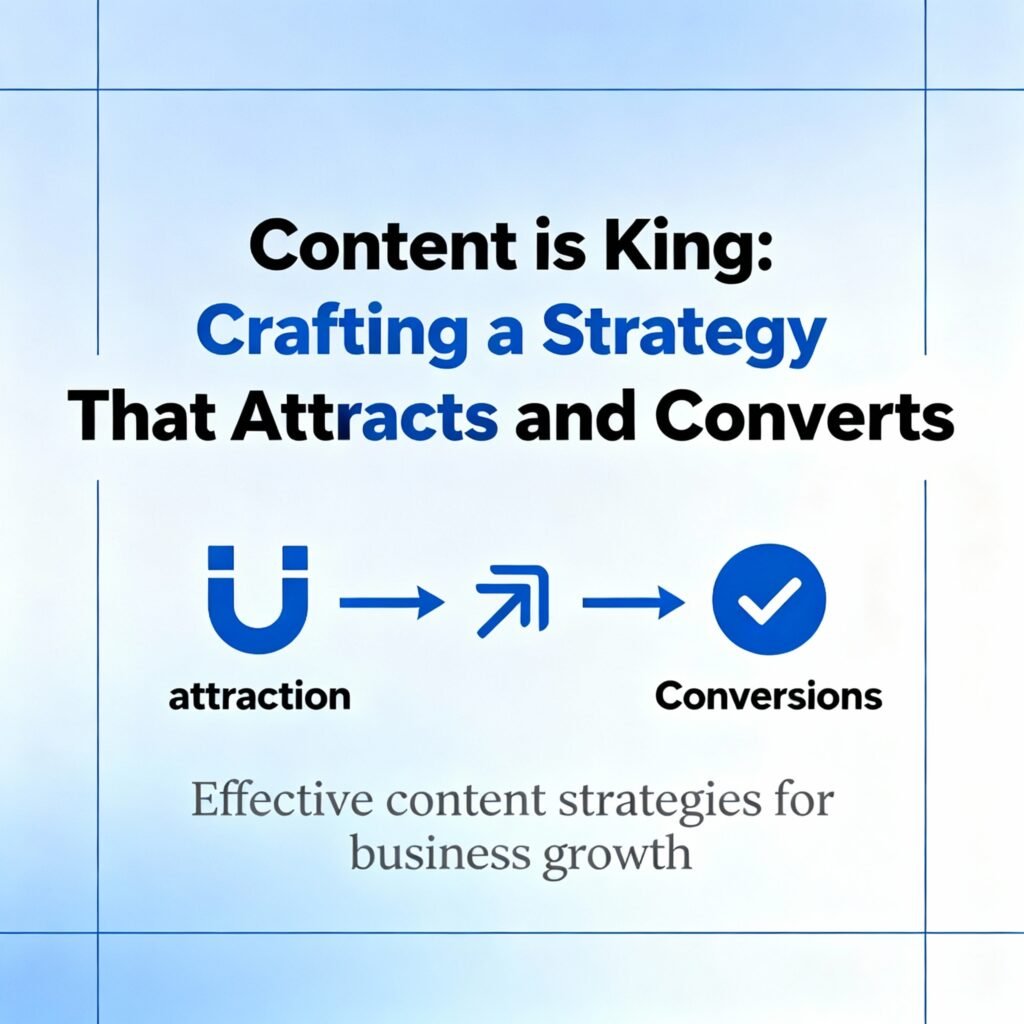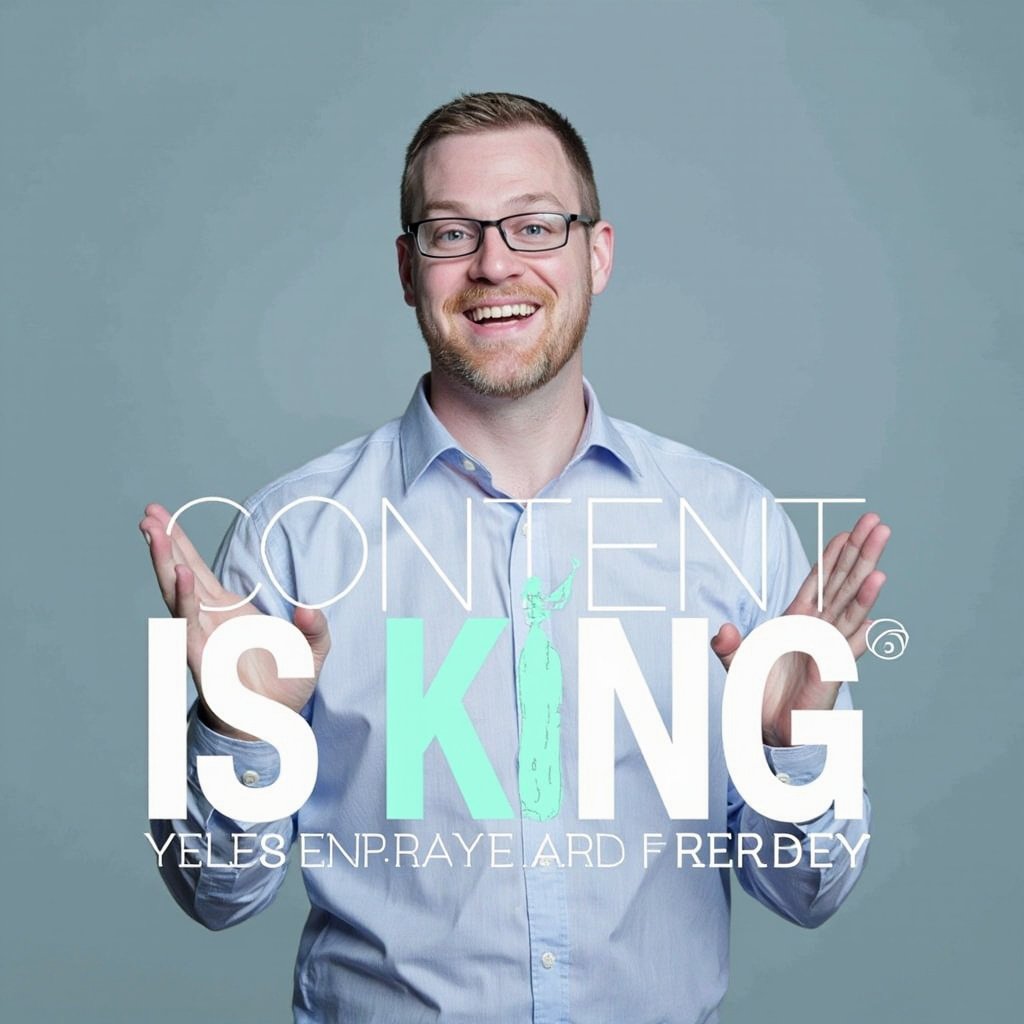
Table of Contents
- From Foundation to Magnet: The Role of Content
- Phase 1: The Strategic Blueprint – Planning Your Content
- Phase 2: Creation & Execution – The Different Crowns of Content
- Phase 3: Optimization & Amplification – Ensuring Your Content Works
- Conclusion: The Reign of Content Begins
1. From Foundation to Magnet: The Role of Content
In our last post, we built a rock-solid foundation: a fast, secure, and well-optimized website. It’s a perfect storefront, ready for business. But a storefront, no matter how beautiful, needs a reason for people to walk in. Content is that reason.
Think of it this way:
- SEO gets you found.
- Content gives people a reason to care, to stay, to trust you, and ultimately, to choose you.
Content marketing is the strategic process of creating and distributing valuable, relevant, and consistent content to attract and retain a clearly defined audience — and, ultimately, to drive profitable customer action. It’s not about selling directly; it’s about building a relationship by being helpful first. This post will guide you through crafting a content strategy that does exactly that.
2. Phase 1: The Strategic Blueprint – Planning Your Content
Jumping straight into writing blog posts without a plan is like setting sail without a destination. Strategy comes first.
Defining Your Goals: What Do You Want to Achieve?
Your content should have a purpose. Common goals include:
- Brand Awareness: Introducing your brand to new audiences.
- Lead Generation: Capturing email addresses for your newsletter.
- Customer Education: Teaching people how to use your product/service.
- Authority Building: Positioning yourself as a thought leader in your industry.
Your goals will dictate the type of content you create and how you measure its success.
Knowing Your Audience Inside and Out
You must know who you are talking to. Create detailed buyer personas—semi-fictional representations of your ideal customers. For each persona, define:
- Demographics: Age, job title, income.
- Goals & Challenges: What are they trying to achieve? What pain points are preventing them?
- Where They Get Information: What blogs do they read? Which social platforms do they use?
Your content should be a direct answer to their challenges and questions.
The Content Pillar Strategy: Building a Universe of Topics
Instead of creating one-off posts, build a structured content universe. This is done through topic clusters or content pillars.
- Choose a Pillar Topic: A broad, important topic relevant to your business (e.g., “Organic Gardening”).
- Create a Pillar Page: A comprehensive, flagship piece of content that provides a broad overview of the topic (e.g., “The Ultimate Guide to Organic Gardening”).
- Create Cluster Content: Create multiple smaller, more specific pieces of content (blog posts, videos) that cover subtopics and link back to the main pillar page (e.g., “How to Make Compost,” “Best Natural Pest Control Methods,” “Companion Planting Guide”).
This strategy is powerful for SEO because it signals to Google that you are a deep authority on a subject.
3. Phase 2: Creation & Execution – The Different Crowns of Content
With your strategy set, it’s time to create. Different formats serve different purposes within your strategy.
Blog Posts: The Workhorse of Authority
Blogs are the backbone of most content strategies. They are perfect for:
- Answering Questions: Target long-tail keywords and provide clear, concise answers.
- Driving SEO Traffic: Fresh, keyword-optimized content tells search engines your site is active.
- Establishing a Voice: Your blog is where your brand’s personality can shine.
Key to Success: Quality over quantity. One detailed, 1,500-word “10x” post (content that is ten times better than anything else on the topic) is far more valuable than ten shallow 300-word posts.
Video Content: The Emperor of Engagement
Video is no longer optional. It’s incredibly engaging and perfect for demonstrating complex ideas.
- Types: Tutorials, explainers, behind-the-scenes, live Q&As, customer testimonials.
- Platforms: YouTube (the second largest search engine), embedded on your site, and shared on social media (Instagram Reels, TikTok, Facebook).
- SEO Bonus: Hosting video on your site can increase “dwell time” (how long a visitor stays), a positive ranking signal. Always provide a text transcript for accessibility and SEO.
Guides & Ebooks: The Ultimate Trust Signals
These are your high-value, “gated” assets designed for lead generation.
- Purpose: To provide such deep, valuable information that a visitor is willing to exchange their email address for it.
- Topics: They should solve a major problem for your audience (e.g., “The Complete Guide to Building a Deck,” “The SaaS Buyer’s Checklist”).
- Format: Professionally designed PDFs or interactive web pages. They are tangible proof of your expertise and are perfect for nurturing leads down your sales funnel.
4. Phase 3: Optimization & Amplification – Ensuring Your Content Works
Publishing content is only half the battle. If you build it, they will not necessarily come. You must actively bring your content to your audience.
Promotion: The Critical Second Half of Content Creation
A promotion plan should be part of your content calendar.
- Social Media: Share your content across all relevant platforms. Don’t just post a link; create engaging snippets, ask questions, and use relevant hashtags.
- Email Marketing: Share your latest pillar content or blog post with your email list. They have already opted in to hear from you!
- Online Communities: Share your insights in relevant Reddit threads, LinkedIn Groups, or industry forums (where the rules allow it). Be helpful, not spammy.
- Paid Promotion: A small budget behind a high-performing piece of content (e.g., a Facebook ad promoting your lead magnet) can dramatically accelerate your results.
Repurposing: Maximizing Your Content Investment
Don’t let a great piece of content live only in one format. Repurpose it to reach new audiences.
- Turn a blog post into: A video script, an infographic, a Twitter thread, a newsletter edition.
- Turn a webinar into: A YouTube video, a series of blog posts, a downloadable slide deck.
- Turn a guide into: A LinkedIn carousel post, key quotes for social media images.
This approach allows you to get maximum mileage from your best ideas.

5. Conclusion: The Reign of Content Begins
Content is the voice of your brand. It’s how you demonstrate your expertise, build genuine trust, and provide value before asking for anything in return. A strategic approach to content—one built on planning, diverse creation, and active promotion—transforms your website from a static brochure into a dynamic, customer-attracting engine.
You now have a foundable website (Post 2) and a plan to fill it with magnetic content (Post 3). But there’s one more powerful piece to the puzzle. How do you build credibility and authority in the eyes of both users and Google? The answer lies beyond your website’s walls.
In our next post, we’ll explore Beyond Your Site: Mastering Off-Page SEO & Link Building, where you’ll learn how to earn the digital votes of confidence that propel your site to the